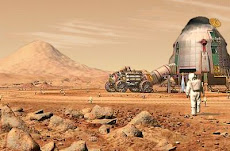The White House1600 Pennsylvania Avenue NWWashington, DC 20500
http://www.whitehouse.gov/
Dear Mr. President
I have heard about the problem concerning the asteroid DD45. I would like to offer my recommendation to solving the problem. From what I understand the asteroid is orbiting the earth at an extremely close range. In a short while this asteroid is predicted to smash into the earth. I have done some research and I gathered that it would be too dangerous to try to smash DD45 out of our orbit. It might mess up the earth by blocking out sun light or by interfering with the gravitational pull. What I suggest is one of two things.
1. Instead of knocking it out of orbit why don’t you blow it up? I don’t mean blowing it to little pieces. I mean if you let’s say used some powerful type of missile you can bombard it from different directions so any particles will be completely destroyed.
2. If you had a few spacecraft’s flying right next to DD45 you can maybe anchor a steel rope or the like to it. Then you can slow it down and bring it to earth.
I hope this was helpful. Good luck in office.
Gedalya Y. Krycer
gedalya@krycer.com
Astronomy Strudent
Texas Torah Institute
17738 Davenport Rd.
Dallas, TX 75252
Tuesday, March 31, 2009
Thursday, March 19, 2009
(Salt)Water on Mars
 NASA has managed for the first time to prove the presence of water in a liquid state on Mars. The US Space Agency published the first images of several drops of water immortalised on the support carriage of the 'Mars Phoenix Lander'. The discovery could have important implications for the chances of finding life forms, however primitive, on the Red planet. Professor Nilton Renno from Michigan University, writes the Times, is certain that these are drops of water which it was thought could not have formed on Mars. The extremely low temperature and pressure on the planet had until now led astronomers to believe that water could only be found as ice or vapour. The temperature on the landing site of the space probe is between -140 and -20 degrees, temperatures which would allow the formation of puddles of water so salty that they would not freeze for a large part of the year. The drops formed on the ''feet'' of Mars Phoenix Lander at the moment of landing when the heat released from the landing rockets melted part of the ice trapped on the surface layer of the permafrost, the ice layer. (AGI).
NASA has managed for the first time to prove the presence of water in a liquid state on Mars. The US Space Agency published the first images of several drops of water immortalised on the support carriage of the 'Mars Phoenix Lander'. The discovery could have important implications for the chances of finding life forms, however primitive, on the Red planet. Professor Nilton Renno from Michigan University, writes the Times, is certain that these are drops of water which it was thought could not have formed on Mars. The extremely low temperature and pressure on the planet had until now led astronomers to believe that water could only be found as ice or vapour. The temperature on the landing site of the space probe is between -140 and -20 degrees, temperatures which would allow the formation of puddles of water so salty that they would not freeze for a large part of the year. The drops formed on the ''feet'' of Mars Phoenix Lander at the moment of landing when the heat released from the landing rockets melted part of the ice trapped on the surface layer of the permafrost, the ice layer. (AGI).Saturday, March 14, 2009
Any Mission to Mars requires a Map... New feature in Google Earth!

Those wonderful canals
1890 map of Mars drawn by Giovanni Schiaparelli.
Giovanni Schiaparelli (March 14, 1835 – July 4, 1910)
Interactive panorama from NASA Rovers.
Mars global terrain in shaded relief.
Download Google Earth 5.0 Mars in Google Earth - a whole new planet to explore
In 1890, Italian astronomer Giovanni Schiaparelli drew this map of Mars. Today, on his 174th birthday, we are excited to include his work with many other new features for Mars in Google Earth.
We salute Schiaparelli's pioneering spirit, his drive to explore, and his desire to understand the universe. His observations impacted the way humans viewed Mars for nearly a century and started a revolution in Astronomy.
Come join the Martian Revolution.
Learn more about Mars in Google Earth

1890 map of Mars drawn by Giovanni Schiaparelli.
Giovanni Schiaparelli (March 14, 1835 – July 4, 1910)
Interactive panorama from NASA Rovers.
Mars global terrain in shaded relief.
Download Google Earth 5.0 Mars in Google Earth - a whole new planet to explore
In 1890, Italian astronomer Giovanni Schiaparelli drew this map of Mars. Today, on his 174th birthday, we are excited to include his work with many other new features for Mars in Google Earth.
We salute Schiaparelli's pioneering spirit, his drive to explore, and his desire to understand the universe. His observations impacted the way humans viewed Mars for nearly a century and started a revolution in Astronomy.
Come join the Martian Revolution.
Learn more about Mars in Google Earth

Friday, March 13, 2009
Earth Orbit is not safe. ISS almost hit this week
Don’t say you are surprised. A 5-inch piece of an old rocket engine recently came within striking distance of the International Space Station (ISS). The crew had prepared for impact and we wonder when one of the tens of thousands of garbage pieces will hit the defenseless station.You knew it was a matter of time. Given the number of uncontrollable pieces of junk floating in orbit, it may even be a surprise that nothing more serious than one satellite collision has happened so far. The ISS crew was warned that the 5-inch piece could be on a collision course, as NASA is able to track pieces down to a size of about two inches. While the astronauts were able to take refuge in the Russian Soyuz lifeboat in the event they had to abandon the station and return to Earth, but the old rocket engine eventually missed. It was unclear by how much and NASA said it may have been a few hundred feet or a few miles. The astronauts themselves said they did not see anything passing the ISS.Last month, a collision of a commercial Iridium satellite with an inactive Russian Cosmos 2251 prompted calls for a space control system to avoid future collisions. We typically assume that space is a whole lot of “nothing”, but a closer look at satellite tracking data provided by the UCS Satellite Database reveals that hundreds of operational satellites and tens of thousands of “junk” is orbiting Earth. There are currently 905 operational satellites in orbit, 443 of which belong to the U.S. government or companies. There are almost 6000 non-operational satellites plus another 10,000 to 11,000 pieces of debris that can be tracked. It is estimated there are another 15,000 to 20,000 pieces of junk that is smaller to be able to be tracked in orbit at this time.
Friday, March 6, 2009
OK. We are going to Mars... will we survive the trip there? Crew Cabin Fever problem
 Oliver Knickel, a mechanical engineer in the German army (second from right), and airline pilot Cyrille Fournier from France (right) were selected as the two European participants in a 105-day isolation study. They joined three Russians on a three-day survival exercise in the woods near Star City, the Russian centre for cosmonaut training near Moscow. (Image: ESA)
Oliver Knickel, a mechanical engineer in the German army (second from right), and airline pilot Cyrille Fournier from France (right) were selected as the two European participants in a 105-day isolation study. They joined three Russians on a three-day survival exercise in the woods near Star City, the Russian centre for cosmonaut training near Moscow. (Image: ESA)http://www.newscientist.com/article/mg20126983.700-crew-chosen-for-mars-isolation-test.html?DCMP=OTC-rss&nsref=online-news
GOT a house mate who's driving you crazy?
Try being cooped up together for 105 days straight in windowless metal canisters.
To better understand how astronauts on a journey to Mars might cope with the confinement on the 520-day trip to Mars, the Institute for Biomedical Problems in Moscow, Russia, and the European Space Agency have set up such an experiment.
To better understand how astronauts on a journey to Mars might cope with the confinement on the 520-day trip to Mars, the Institute for Biomedical Problems in Moscow, Russia, and the European Space Agency have set up such an experiment.
From 31 March, French airline pilot Cyrille Fournier, German engineer Oliver Knickel and four Russians - cosmonauts Oleg Artemyez and Sergei Ryazansky, Alexei Baranov, a doctor, and Alexei Shpakov, a sports physiologist - will be stuck in a simulated Mars spacecraft.
Their communications with the outside world will be delayed by 20 minutes to simulate the radio lag between Mars and Earth.
Conflict arises easily in such crowded environments, says Pascal Lee, a planetary scientist who once did a 402-day stint in a French research station in Antarctica. The results will help design an experiment of full Mars-mission duration. Read about his experience by clicking here:
Wednesday, March 4, 2009
Did you feel that? meteor almost hit earth yesterday. 2009 DD45 Missed us.
SYDNEY - A 200-foot wide asteroid whizzed by Earth yesterday, narrowly missing us by 40,000 miles. Australian astronomers discovered the object, called 2009 DD45, just a few days before it arrived. While it was only 200-feet wide, the impact would have been enough to wipe out a major city. It past within the orbit of the moon.
Just did not want you to miss that moment in time.
Reality check.
FD
http://neo.jpl.nasa.gov/orbits/
http://www.fourmilab.ch/solar/help/elements.html
http://earthquake.usgs.gov/eqcenter/dyfi/
http://www.tv.com/life/did-you-feel-that/episode/1225082/summary.html
http://weeklyworldnews.com/alien-alert/6648/asteroid-misses-earth/
Just did not want you to miss that moment in time.
Reality check.
FD
http://neo.jpl.nasa.gov/orbits/
http://www.fourmilab.ch/solar/help/elements.html
http://earthquake.usgs.gov/eqcenter/dyfi/
http://www.tv.com/life/did-you-feel-that/episode/1225082/summary.html
http://weeklyworldnews.com/alien-alert/6648/asteroid-misses-earth/
Subscribe to:
Posts (Atom)



